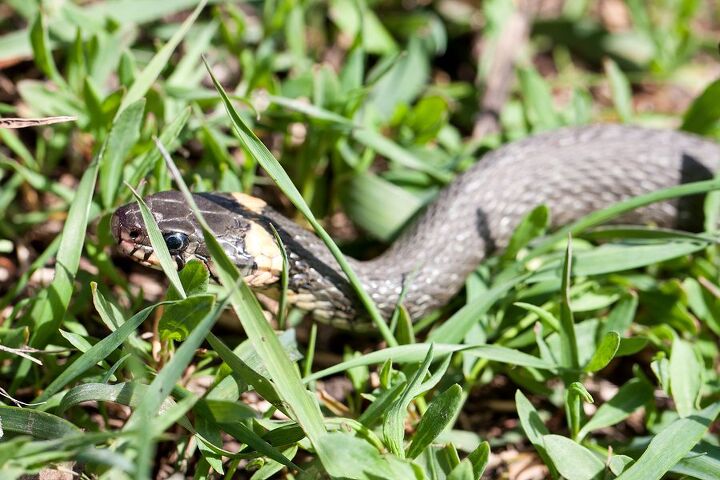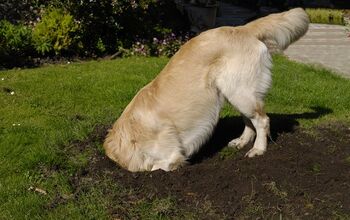Simple Tips to Protect Your Dog From Snakes

If you are lucky enough to live near an area where it is safe to let your dog off the leash during his walk, you can bet that your dog will take full advantage of every bit of freedom you offer him. Giving your dog some off-leash time is a great way to give him a little bit of extra exercise without having to strain yourself too hard. What you have to realize, however, is that when your dog is off the leash, you have less control over him and that could put him in a dangerous situation, especially during snake season.
Tips for Identifying Venomous Snakes
Depending where you live, there may not be any venomous snakes around for you to worry about. But you should not play the odds, even if you are fairly certain that this is the case. It is your responsibility to protect your dog and part of that responsibility means identifying potential dangers.
Related: What Animals To Watch Out For While Hiking With Your Dogs
First of all, let’s dispel one of the most common myths about venomous snakes – they don’t all have rattles like rattlesnakes to warn you when you are getting too close. In fact, many snake bites happen because the victim doesn’t even know the snake is there and he gets bitten when he accidentally steps on it. To protect yourself and your dog, learn to recognize the signs that a snake is venomous:
- Broad head and very skinny neck (some call it a triangular head)
- Pointed snout with a nostril AND a heat sensing pit (nonvenomous snakes only have a nostril)
- Elliptical pupil (vertical slit-like pupil rather than a round pupil)
Of course, many of the ways that can be used to identify a venomous snake can only be noticed when you are up-close. The best way to really protect yourself and your dog is to know what kind of environments snakes tend to prefer and then exercise extra caution when you are in such an area.
Related: Do You Lift a Leg When Your Dog is Stung by Jellyfish?
Snakes can be found in wooded areas as well as grassy areas and even near water. They cannot regulate their own body temperatures, so be on the lookout for snakes stretched out in the sunlight. They also like to make their homes in piles of wood and debris.
What to Do if Your Dog Gets Bitten
If you let your dog off the leash, he may roam out of sight and you may not actually see him get bitten. In this case, it will be valuable for you to be able to identify a snake bite. Here are some of the most common symptoms:
- Bleeding or bruising around the bite
- Excessive swelling on the body around the bite
- Changing color in the affected tissue
- Signs of shock (chills, pale gums, tremors, etc.)
- Weakness, lethargy, or confusion
- Vomiting
- Very slow breathing
If you suspect that your dog has been bitten by a snake, take him to the vet or an emergency clinic as soon as possible. Whatever you do, do NOT cut into the bite, try to suck out the venom, or apply a tourniquet to the area. You should also avoid applying heat or ice to the wound and do your best to keep your dog restrained and calm – this will help to slow the spread of the venom.
They say that an ounce of prevention is worth a pound of cure, and that is particularly accurate when it comes to snake bites. Even if the snake isn’t venomous, it can still cause your dog a great deal of pain and the bite could get infected. Learn to identify venomous snakes as well as their habitats and keep your eyes peeled when you are out with your dog.

Kate Barrington is the loving owner of two cats (Bagel and Munchkin) and a noisy herd of guinea pigs. Having grown up with golden retrievers, Kate has a great deal of experience with dogs but labels herself a lover of all pets. Having received a Bachelor's degree in English, Kate has combined her love for pets and her passion for writing to create her own freelance writing business, specializing in the pet niche.
More by Kate Barrington























